mobile View, to the German Version tap the flag


- Falkland Islands and Dependencies
- Possession of Great Britain, Overseas territory with internal autonomy
- consisting in the Falkland Islands, and the Dependencies of South Georgia and the South-Sandwich-Islands
- claimed as "Islas Malvinas" by Argentina
- own name: Falkland Islands (English)
- other names: Islas Malvinas (Spanish), Îles Malouines (French)
• Flags
• Historical Flags
• Meaning/Origin of the Flag
• Coat of Arms
• Meaning/Origin of the Coat of Arms
• Map
• Numbers and Facts
• History
• Origin of the Country's Name

since 1842,
Union Flag → quasi national flag,
Flag of United Kingdom,
ratio = 1:2,
Source, by: Wikipedia (EN)





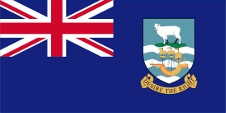
since 1999,
Flag of the government (state flag),
ratio = 1:2,
Source, by: Corel Draw 4, Wikipedia (D)





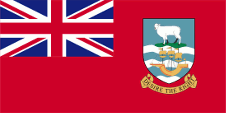
since 1999,
merchant flag,
ratio = 1:2,
Source, by: Corel Draw 4, Wikipedia (D)



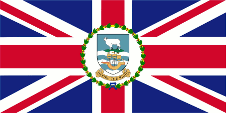
Flag of the Governor,
ratio = 1:2,
Source, by: Wikipedia (D)



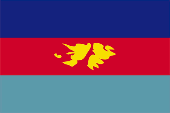
Flag of the British Forces South Atlantic Islands (BFSAI),
ratio = 2:3,
Source, by: Wikipedia (EN)




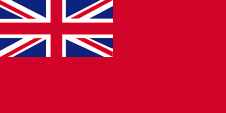
1865–1999,
Merchant flag,
ratio = 1:2,
Source, by: Flags of all Nations





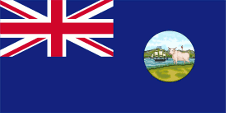
1876–1925,
Flag of the government (state flag),
ratio = 1:2,
Source, by: Wikipedia (EN),
Sodacan, Public domain, via Wikimedia Commons



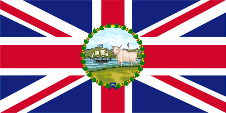
1876–1925,
Flag of the Governor,
ratio = 1:2,
Source, by: Wikipedia (EN),
Sodacan, Public domain, via Wikimedia Commons



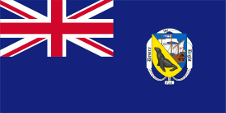
1925–1948,
Flag of the government (state flag),
ratio = 1:2,
Source, by: Wikipedia (EN),
Sodacan, Public domain, via Wikimedia Commons



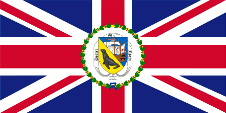
1925–1948,
Flag of the Governor,
ratio = 1:2,
Source, by: Wikipedia (EN),
Sodacan, Public domain, via Wikimedia Commons



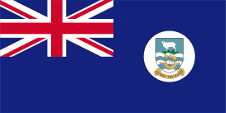
1948–1999,
Flag of the government (state flag),
ratio = 1:2,
Source, by: Wikipedia (EN)




The Union Jack points to the connexions to United Kingdom. United Kingdom introduced a flag system in 1864 in which:
• war ships fly the "White Ensign" (naval flag), a white flag often with an uninterrupted red St. George's-Cross and with the Union Jack in the upper staff quadrant of the flag,
• merchant ships fly a "Red Ensign" (also named "Civil Ensign" → civil flag, the real merchant flag), a red flag with the Union Jack in the upper staff quadrant of the flag, and
• governmental ships fly the "Blue Ensign" (flag for the use by the gouvernment → the actual state flag), a blue flag with the Union Jack in the upper staff quadrant of the flag.
Since 1865 ships of colonial governments were permitted to fly the Blue Ensign with a badge in the flying end of the flag. The respective governments were asked to design appropriate badges. Merchant ships and seafaring persons from colonies were only permitted to use the Red Ensign with a badge, then also named Civil Ensign, if permission has been given to the respective colony by the British admiralty. Such a badge was often a regional landscape representation placed on a disk, often showing ships, historical events or even a kind of a logo. Very often, a badge also showed the name of the country or a motto. Some British possessions, however, already had a coat of arms from the beginning, or their badge was replaced by a coat of arms over the years. To ensure a uniform appearance in the flying end of the flags, coats of arms and other symbols were displayed on a white disk in the size of the earlier badges. There were also exceptions, because some colonies did not use the white disk and placed their escutcheon or even coat of arms directly on the bunting, sometimes enlarged. Already in the '40s they started to remove the white disk and placed the coat of arms directly or enlarged. This conversion process was done gradually, nowhere at the same time and completely. In some British possessions, flags with the white disc are still in use, in others no more and in some areas are both variants in use, next to each other.
In many British possessions and partly also in the Commonwealth, there has been and still is a trend for the Blue Ensign, i.e. the actual sea flag of the authorities with the local badge (insignia), to be used by authorities also on land or even by civilians. In some cases, this has been done officially by unilaterally creating facts. However, this is usually only tolerated under protest. On land, the individual citizen and also the authorities represented their status as citizens or organs of the British nation, embodied in the United Kingdom, through the use of the Union Jack, then called the "Union Flag". At sea, the British citizen was thus provided with the British merchant flag, the Red Ensign. In a few cases, the citizens of a colony were allowed by the Admiralty to use their own Red Ensign with the colony's badge at sea. That caused frequently the use of these Red Ensigns on land instead of the Union Flag, even with other local badges, for example in some Canadian provinces. Similarly, in some British possessions, Red Ensigns were created and used by citizens on their own authority and without permission.
Instead of a badge, appears on the Blue and Red Ensign of the Falkland-Islands the coat of arms since 1999, on which is pictured a sheep on a island and a ship with English flags on the masts, beneath a motto-string with the motto of the Islands. The motto is "Desire the Right". The flag with the today's badge was introduced in 1948.
Source:
Die Welt der Flaggen,
Flags of the World,
Wikipedia (D),
Volker Preuß


since 1948,
Coat of arms of the Falkland Islands,
Source, by:
Wikipedia (D)
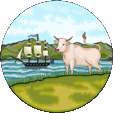
1876–1925,
Badge of the Falkland Islands,
Source, by:
Wikipedia (EN),
Sodacan, Public domain, via Wikimedia Commons

1925–1948,
Badge of the Falkland Islands,
Source, by:
Wikipedia (EN),
Sodacan, Public domain, via Wikimedia Commons
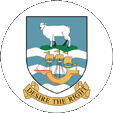
1948–1999,
Badge of the Falkland Islands,
Source, by:
Corel Draw 4, Wikipedia (D)

The coat of arms of the Falkland Islands shows a blue shield with three white wavy bars in the bottom half since 1948. On the top of the shield is placed a white sheep on a green meadow. Over the wavy bars is placed a three-masted sailing ship, heraldical right floating. Under the shield is a banner with the state motto in English: "Desire the right". The sheep represents the for the islands important sheep breeding. The ship is the "Desire" of John Davis, who probably discovered the islands in 1592. Badges were used on the flags of the Falkland Islands authorities between 1876 and 1999. The first badge from 1876 showed a shore landscape with a wild cow in the foreground, which once existed on the island. In the background was a ship, HMS Hebe, which brought the first British settlers to the islands. The second badge of 1925 was already a coat of arms showing a sea lion and again a ship, this time Thomas Cavendish's Desire. It was later rejected as "unsightly" and replaced in 1948 by the present coat of arms on a white disc. Nevertheless, that coat of arms is still used as the insignia of the "Falkland Islands Defence Force", a kind of volunteer land militia.
Source:
Wikipedia (D),
Wikipedia (EN),
Volker Preuß

Location:
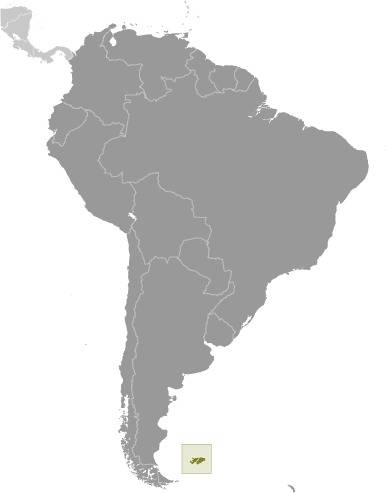
Source: Freeware, University of Texas Libraries, modyfied by: Volker Preuß
Map of the country:
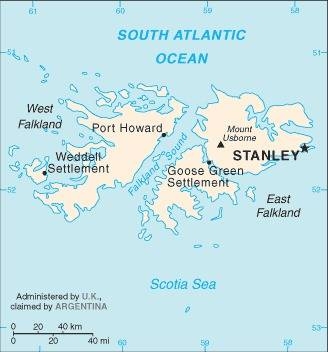
Source: CIA World Factbook
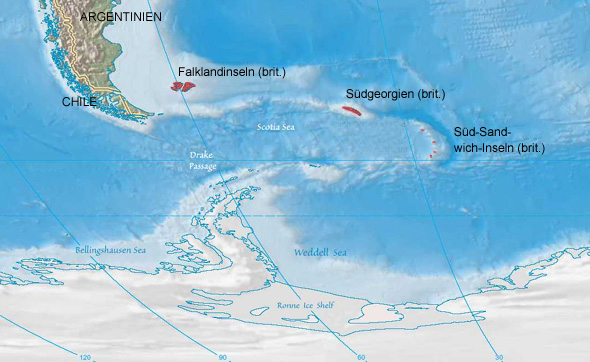
Quelle: Freeware, University of Texas Libraries, modyfied by: Volker Preuß

Area: 4.700 square miles (without South Georgia and South-Sandwich-Is.), thereof East Falkland 2.580 sq.mi., West Falkland 2.038 sq.mi.
Inhabitants: ca. 3.000 (2020), and ca. 1.700 soldiers as a garrison
Religions: mostly Protestants, some Anglicans and Catholics
Density of Population: 0,64 inh./sq.mi.
Capital: Stanley (Port Stanley), 2.120 inh. (2012)
official Language: English
Currency: Falkland-Islands-Pound (F.I.-£, FKP) = 100 Pence
Time Zone: GMT – 3 h
Source: Wikipedia (D)

1592 · discovered by the Englishman John Davis (by other informations in 1520 by a Spaniard or even in 1594 by the Englishman Hawkins)
1690 · re-discovered by the Englishman John Strong
1763 · French Settlement
1764 · British Settlement
1763 · establishment of Port Louis (French)
1765 · establishment of Port Egmont (Brit.)
1766 · Spain purchases the French villages
1767–1770 · expulsion of the French and British settlers by the Spanish
1811 · Spain surrenders the Falkland Islands, but the Spanish settlers stay
1820 · Rio de la Plata (former name of Argentina) raises demands for the Falkland Islands
1826 · Argentina raises demands for the Falkland Islands
1833 · United Kingdom takes possession of the Falkland Islands and expels the Spanish settlers
1842 · British crown colony
1982 · Argentina defeats United Kingdom in the Falkland War
1985 · the Falkland Islands receive a constitution
2009 · new constitution, South Georgia and the South Sandwich Islands lose their status as a dependency of the Falkland Islands and are spun off as a separate colony, but the Governor of the Falkland Islands administers this islands in personal union as Commissioner
2013 · Referendum, 99.8 % of residents vote to remain with United Kingdom
Source:
Wikipedia (D),
Atlas zur Geschichte,
Discovery '97,
Handbuch der geographischen Namen

The Falkland Islands have been repeatedly discovered, because they are apparently were forgotten again and again. Ever since the discovery of Cape Horn in 1616 grew the strategic importance of the region, so that the rediscovery by the British seafarer John Strong became important for the naming the islands. They got the name of the Treasurer of the Queen and of the authority of John Strong: L. C. Falkland. From 1763 French from Saint-Malo colonized the islands, which gave them the name of their city: Îles Malouines (Malvinas). When the British returned in 1833, the islands were renamed back to Falkland Islands, but France and Argentina maintained the name Malvinas.
Source:
Handbuch der geographischen Namen


![]()












































